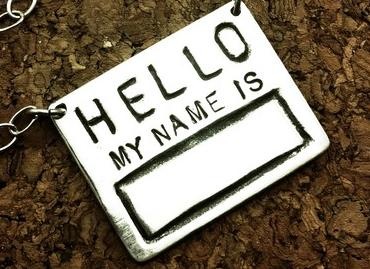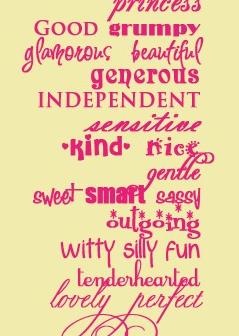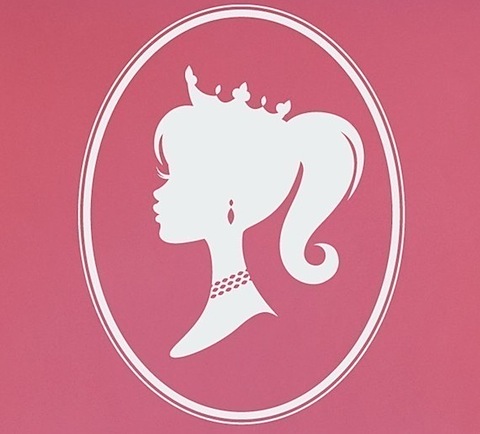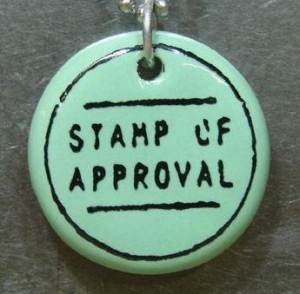Personal branding is inescapable.¹
A person simply cannot participate in online forums, much less in their full career, without deliberately or unintentionally crafting and framing the way that they are seen by others.
However, while personal branding is inescapable, it isn’t easy to make it work in our favor.
Personal branding is fraught with choices and tensions, and these challenges are different for girls.
For women of every race, ethnicity, and orientation, each personal branding decision requires us to navigate the crosscurrents of societal pressures and personal authenticity. Each woman needs to negotiate which social expectations she’ll meet, and which ones she will resist, as she strives to create and defend a personal brand that expresses her unique identity.
Every social media platform constrains the ways that you can represent ‘who you are’.
Personal Branding starts with presenting yourself online, in public spaces, on public platforms, for other people to see you. Most professional social media platforms–those internal to the organization, those connected to particular communities, and even those where you might participate as your own “self” – select and constrain the information you are able to display.
 Software platforms are built to reflect value-laden decisions about what sorts of information matters, how much information is important, how that information with be displayed, and to what degree the presentation of this information can be personalized. These choices reflect what’s best for the software platform, not what’s best for your personal brand.
Software platforms are built to reflect value-laden decisions about what sorts of information matters, how much information is important, how that information with be displayed, and to what degree the presentation of this information can be personalized. These choices reflect what’s best for the software platform, not what’s best for your personal brand.
On these social platforms, we craft our personal brands though a series of decisions about – naming, – claiming, – displaying, and – disclosing ‘who we are’.
For women, each of these decisions requires us to navigate that gray space between buying into or resisting social expectations for what she is allowed to be and how she is allowed to claim her unique identity.
Naming
Let’s start with a really easy personal branding decision: What name are you going to use?
- Will you use a formal name, a nickname or a handle? Will you choose a name that reflects your life-partnership status, or one that is independent of your relationship status?
- If you are married, are you going to use your birth name or your married name? Are you going to hold on to your pre-marital online history by retaining your name? Will you try to keep your professional and personal lives separate online by using different surnames?
- If you are in a relationship that is not recognized by the laws in your state, will you try to signal with your name that you have a life partner? Or, will you use a name that helps you keep this part of your life? Are you going to try to hyphenate your last name, and then hope that the software platforms you need to use will actually accommodate a name with more than 16 characters, that includes a hyphen?
Along with the decision itself, are you ready to negotiate the expectations about your career commitment and your priorities that people infer from the decision you make around your name choice?
Claiming
Online, we need to claim what we know, how we know it, and what we can do so that people know how to categorize us. We need to describe ourselves with terms that represent our defining characteristics, our experience, our accomplishments, and our abilities. For women, claiming presents three challenges– claiming our expertise, finding labels that fit that expertise, and finding labels that don’t invite the ‘wrong’ interpretation.
When you label your attributes, your skills, and your accomplishments, your goal is to establish credibility. Taking credit may or may not be harder for women, but certainly appearing credible by striking an acceptable tone as you describe your achievements and accomplishments is harder for women.
- What terms feel accurate and comfortable for you to use to describe yourself and your expertise? How do you choose terms that strike the right note without seeming presumptuous? What words and phrases are appropriate for women?
- Are you ready to deal with the ways that some people will respond if you emphasize a particular credential, or when you take credit for an accomplishment in a way that they think is inappropriate for women?
Formal titles and credentials can often be received differently when they are offered by a woman and not a man.
Here’s an example from my own experience. I’ve noticed that a few times when I’ve commented on other blogs and mentioned my PhD, or referred to my scholarship (as in, research published in peer-reviewed scientific journals), men who disagree with me have challenged my academic bona fides by making snarky references to my PhD or putting the work “scholarship” in ironic quotation marks. I haven’t seen men dismiss other men in the same way.
The credential ‘bounces’ differently when offered by a woman than when offered by a man. Just ask Senator Boxer, or Dr. Jill Biden.
Displaying
Peole consume online information visually, so “optics” matter a lot. What kind of visual design and images will you offer to establish people’s first impressions?
Head shots, profile pictures, and twitter avatars capture one particular visual image of who you are. The picture you choose not only (usually) reveals your gender, but also reveals your age, ‘attractiveness‘, and gender performance. So, choosing your headshot is a big deal.
- Will you wear makeup or not? Will you have your hair natural or will you get your hair processed? Will you retouch your photo or leave the wrinkles blemishes visible? Will you try to look older or younger? What will you wear?
- Will you have a professional take your head shots or will you just crop an informal snapshot? What gaze will you choose? Will you smile or look serious?
- (Note: Regardless of your sex, unless your screen name or handle includes the word ‘diva’, I don’t think your avatar should project a ‘come hither’ vibe. Just sayin’.)
 Are you trying to look competent or warm? Personable or professional? Claim or avoid the ‘feminine’? These choices matter.
Are you trying to look competent or warm? Personable or professional? Claim or avoid the ‘feminine’? These choices matter.
You also create your brand through the visual appearance of your online space, with fonts, themes and colors.
- Will you chose fonts, colors and themes that communicate that you are female? Will you present a conventional expression of femininity with a pink or purple website with curvy fonts? Or, will your site be red & black, blue & grey, sans serif and androgynous?
All Cover, Not Much Book
The first three steps of personal branding — naming, claiming, and displaying– focus on creating a first impression. These steps of personal branding emphasize the simple surface more that the complex depth of a person.
Coincidentally, these steps heighten two ongoing tensions that many women struggle with:
1) being subject to the scrutiny of the male gaze, and
2) being valued for how she looks rather than who she really is.
Consider that simply being told that men are observing her can prompt a woman to “narrow her social presence” and to say less about herself.
Just as women experience pressure to meet external, often unrealistic (and usually performance-irrelevant) appearance standards in physical work spaces, they also experience that pressure online. This pressure is not imaginary or all in their heads; women actually get unsolicited feedback on their pictures and self-descriptions based on whether and how their appearance conforms to some people’s standards. All you have to do is read the comments on blog post by an outspoken woman, and without even scrolling a third of the way down, you’ll see some reference to her appearance. It won’t be complimentary.
Personal disclosure
To craft an appealing brand, we’re told to share more personal information about ourselves– to tell personal stories, to share emotions, to be honest about our opinions. Personal disclosure helps people “get to know who we really are”.
 However, personal disclosure can also make us vulnerable.
However, personal disclosure can also make us vulnerable.
Online, personal disclosures are interpreted differently and are often less safe for women than for men. For example, when a man mentions on Twitter or Facebook that he’s home for the day with a sick child, people send him pats on the back. In contrast, many women won’t even mention if this is happening for them, since the very bit of disclosure that gets a man applause for being a good dad garners for a woman the concern that she’s less professional or less committed to her work.
Some people take the opportunity to offer unsolicited feedback on whether, why and how a person’s disclosure is valuable, and to pass judgment on that person publicly, through blog comments, “likes”, and responses.
Personal disclosure opens us up to other people’s scrutiny, where they can evaluate us on dimensions that are unrelated to our professional ability.
For many of us women who’ve been working in the professional world for while, much of our effort to develop our reputations and to build our “personal brands” has meant breaking free of the templates created by stereotypes. Most of us have been creating our reputations over time, through multimodal interactions, histories of action & reaction, long-standing professional relationships, and more. These are overstuffed with information about us and offering people experiences of us from which they can infer and construe who we are, and get a fuller sense of our authentic selves.
 But even so, seemingly superficial choices about how we present ourselves online still seem to matter. We women have to create a place for ourselves and each other in a professional world that is not excited about having us participate as professionals – especially not in our most authentic, anti-stereotypical, self- expressions.
But even so, seemingly superficial choices about how we present ourselves online still seem to matter. We women have to create a place for ourselves and each other in a professional world that is not excited about having us participate as professionals – especially not in our most authentic, anti-stereotypical, self- expressions.
All this is not to dismiss the ways that personal branding is a challenge for boys, but rather to help us appreciate that:
Given the demands of presenting oneself in a socially-approved way versus as our most authentic selves, it’s different for girls.
See also:
Don’t Let Personal Branding Stifle your Authentic Voice
Defend Your Personal Brand. Barbara Boxer shows how.
Authentic Twitter: Are exclamation points unprofessional?
¹ Note, I’m not a wholehearted fan of personal branding.
Mystery and the Modern Woman,
Confessions of a 36 year-old woman, by Tara Hunt on horsepigcow
Images:
Hello My Name Is silver pendant, by pollysimon on Etsy
Princess Silhouette Cameo Vinyl Decal tweetheartwallart on Etsy
Girl Name Definition Adjectives PlanetWallArt on Etsy
Handmade paper flower by danamazing on Etsy
Stamp of Approval, by Circa Ceramics on Etsy
 I am an organizational consultant, change advocate, and organizational identity/reputation scholar with a PhD in leadership & organizations. I research, write about, and consult with organizations on the relationships between organizational identity, actions, and purpose. I teach Technology Management, part-time, at Stevens Institute of Technology.
My current research focuses on how social technologies in the workplace can drive organizational change, generate meaning, and catalyze purpose. See the
I am an organizational consultant, change advocate, and organizational identity/reputation scholar with a PhD in leadership & organizations. I research, write about, and consult with organizations on the relationships between organizational identity, actions, and purpose. I teach Technology Management, part-time, at Stevens Institute of Technology.
My current research focuses on how social technologies in the workplace can drive organizational change, generate meaning, and catalyze purpose. See the 
{ 5 comments }
Glad to see this interesting point of view, that I also emphasize in my workshops and coaching sessions for female professionals defining their personal brand.
“The female touch” in personal branding definitely is a bit different: not more challenging than it is for men, just different!! Some issues may vary in different cultures: in some European countries the married name may be less of an issue for instance.
But a universal female challenge is certainly to find the balance between stating and claiming your expertise and making this visible versus what the social expectations are of women (not to be a “show-off”) not to mention our little inner voices who remind us constantly of all these expactations of others AND ourselves… and the gap between our mother’s world and the present reality!
Women’s and men’s brain are different, together we make a very good pair 🙂 but personal branding sometimes needs another approach!
Hi Tessa,
Thanks so much for commenting — and for raising the point that our national-cultural context (e.g., Netherlands, USA) shapes the stereotypes as well as our efforts to move past them. I can also see from your own website (full of resources, by the way) that you’re also trying to find that space between “business-y” and ‘authentically you’! cv
Thanks for your reply and visit to my website, cv! Yes, we have a shared business
focus and passion I guess and we have got our work cut out for us!
Interesting that you did not mention the physical safety issue. When I first was on the internet, I was participating in a forum. Suddenly one of the male members of the forum was asking personal questions about the location of where I worked. I doubt a man would feel as intimidated by these questions as a woman. After being cyber “stalked” for a while, I went off line for a while. Finally, when I began my online activity again, I made sure that I was ambiguous in the information I provided and careful about sites in which I participated.
There has been some interesting work done, especially in the area of online learning, about the reasons for lack of participation by students. Women tend to be less active participants initially, one reason being a lack of trust. They are more apt to trust someone they have met face to face rather than online.
Hi Virginia-
Safety is a key issue– I thought that addressing the concept of vulnerability would capture both the psychological and physical aspects of concern for safety. But of course you’re right, for women the concern about being able to feel safe, regardless of the context, is important. Any kind of sharing of ‘who we are’ can leave us more vulnerable, because in practice women are less safe than men online. Thanks for bringing this point to the fore.
cv
Comments on this entry are closed.